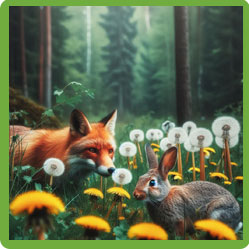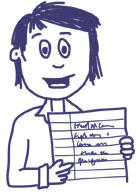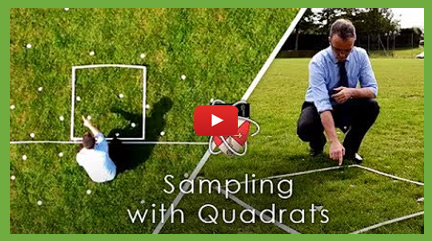
Adaptations & Competition
In biology, adaptations are features that help organisms survive in their environment, such as thick fur in cold climates or long roots in deserts. Competition happens when organisms fight for limited resources like food, water, or territory. This topic explores how plants and animals adapt, compete, and evolve to survive in the wild.
Practicals on this page:
Using Quadrats, Using Transects
Adaptations: How Organisms Survive
Organisms have features called adaptations that help them survive and reproduce in their environments. These can be:
- Structural – like thick fur or sharp claws
- Behavioural – like migration or hunting at night
- Functional – like conserving water or producing venom
For example, a camel has long eyelashes (structural) to protect its eyes from sand and can survive long periods without water (functional).
Microorganisms and Extreme Environments
Some microorganisms, known as extremophiles, are specially adapted to live in extreme conditions such as high temperatures, salinity, or acidity. These adaptations allow them to survive where most life forms cannot—like in deep-sea vents or hot springs.
Food Chains, Predators and Prey
A food chain shows how energy is passed from one organism to another. It always starts with a producer (like a plant), followed by consumers (like herbivores and carnivores).
- Prey are animals that are hunted by predators.
- Predators are animals that hunt and eat other animals.
Balanced ecosystems rely on stable relationships between predators and prey. If one population changes, it can affect the whole food chain.
Revision Notes

The Cornell method is like a supercharged note-taking system that helps you ace your revision!
Print out our blank revision notes pages to help you revise.
How to make effective revision notes with the Cornell method.
Exam Questions & Answers

Download and print off practice our FREE worksheet with exam style questions on Cell Biology.
How the Environment Varies
The distribution of organisms depends on environmental factors such as:
- Temperature
- Availability of water or light
- Levels of carbon dioxide or oxygen
- Soil type or pH
These conditions can change naturally or due to human activity, affecting where organisms live and how well they survive. For example, plants in shady woodland may compete for sunlight, while desert animals must cope with extreme heat and lack of water.
PRACTICAL - Using Quadrats
In this practical, you’ll learn how to estimate the population size of a plant species in a given area using a quadrat—a square frame placed randomly on the ground. By counting the number of plants within several quadrats and calculating the average, you can estimate population density and compare biodiversity between areas. This helps scientists study how environmental factors affect the distribution of living things.
PRACTICAL - Using Transects
This practical teaches you how to investigate how the distribution of organisms changes across an area using a transect line. A transect is a straight line (often marked with a tape measure) laid across a habitat. At regular intervals along the line, you use a quadrat to record the presence or number of a species. This helps identify patterns in where organisms live and how abiotic factors (like light or moisture) affect them.
Revision Notes

The Cornell method is like a supercharged note-taking system that helps you ace your revision!
Print out our blank revision notes pages to help you revise.
How to make effective revision notes with the Cornell method.




